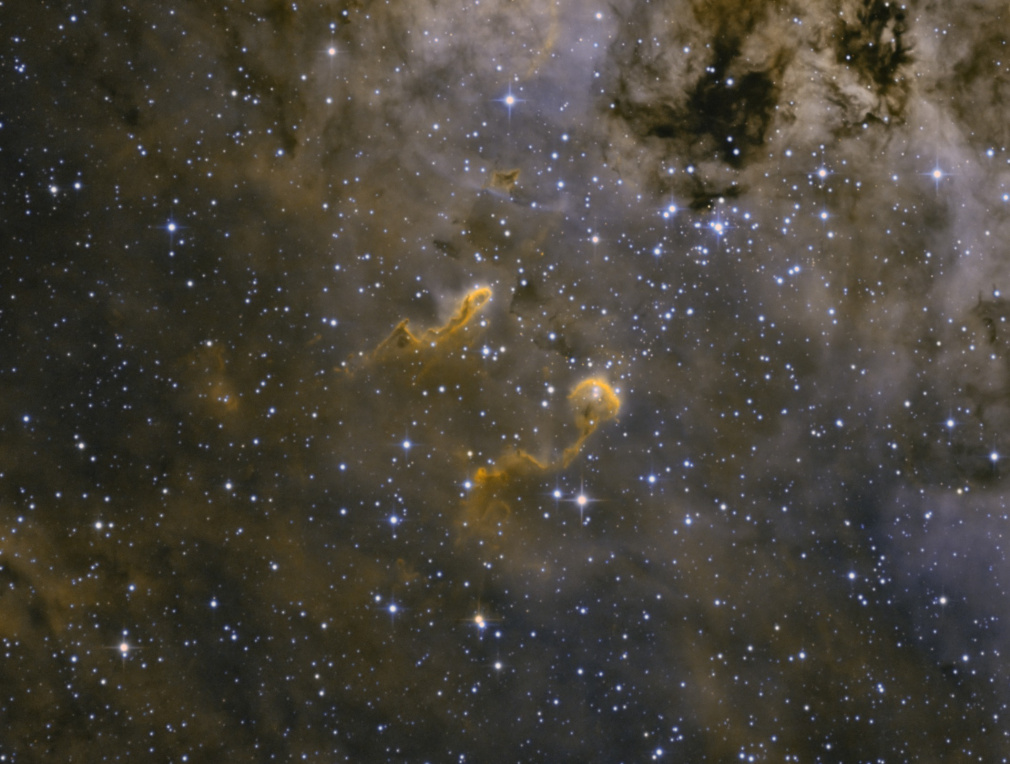IC 410 is a star-forming nebula located in the constellation Auriga, approximately 12,000 light-years away from Earth. This celestial wonder is known for its vibrant colors and intricate structures formed by a mix of gas and dust. At the heart of IC 410 lies a young and massive star cluster called NGC 1893, whose intense radiation and stellar winds sculpt the surrounding gas clouds, creating a visually stunning display. The nebula is predominantly composed of ionized hydrogen gas, which emits a reddish hue when energized by the ultraviolet radiation from nearby hot stars.
Within the confines of IC 410, a particularly intriguing feature known as the "Tadpoles" adds an extra layer of fascination. The Tadpoles are elongated structures resembling tadpoles swimming in cosmic waters. These formations are dense gas and dust pillars sculpted by the powerful radiation and stellar winds from the massive stars in NGC 1893. The intense radiation erodes the surrounding material, creating these peculiar shapes as the denser regions resist the erosive forces. The Tadpoles in IC 410 provide a unique opportunity for scientists to study the complex interplay between massive stars and their natal environments, offering insights into the processes of star formation and the impact of massive stars on the surrounding interstellar medium.
Observations and studies of IC 410, including the Tadpoles within it, contribute to our understanding of the life cycles of stars and the dynamic nature of stellar nurseries. As astronomers delve deeper into the intricacies of nebulae like IC 410, they gain valuable knowledge about the mechanisms driving the birth and evolution of stars, shedding light on the fundamental processes that shape our universe.
The colors in this picture does not reflect the actual colors of the nebula, because I used two narrow-band filters to capture it. One of the filters shows the distribution of hydrogen, the other one shows the same for oxygen. Red channel of the final color image contains the data from hydrogen filter, blue channel contains oxygen, and green channel contains a mixture of the two. So far this is the only image on my site not showing objects in their real color.
